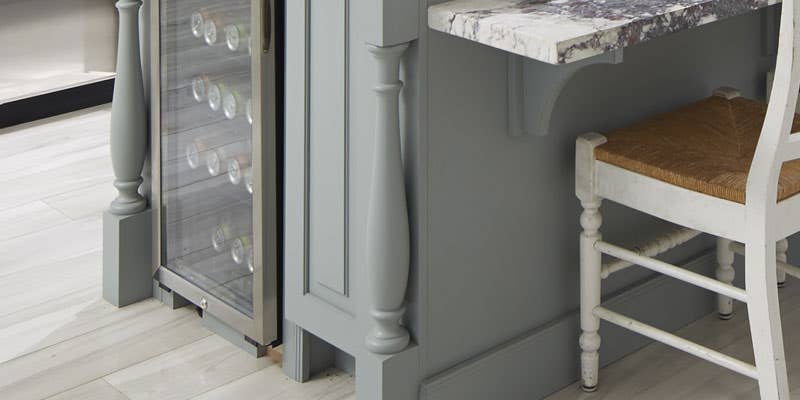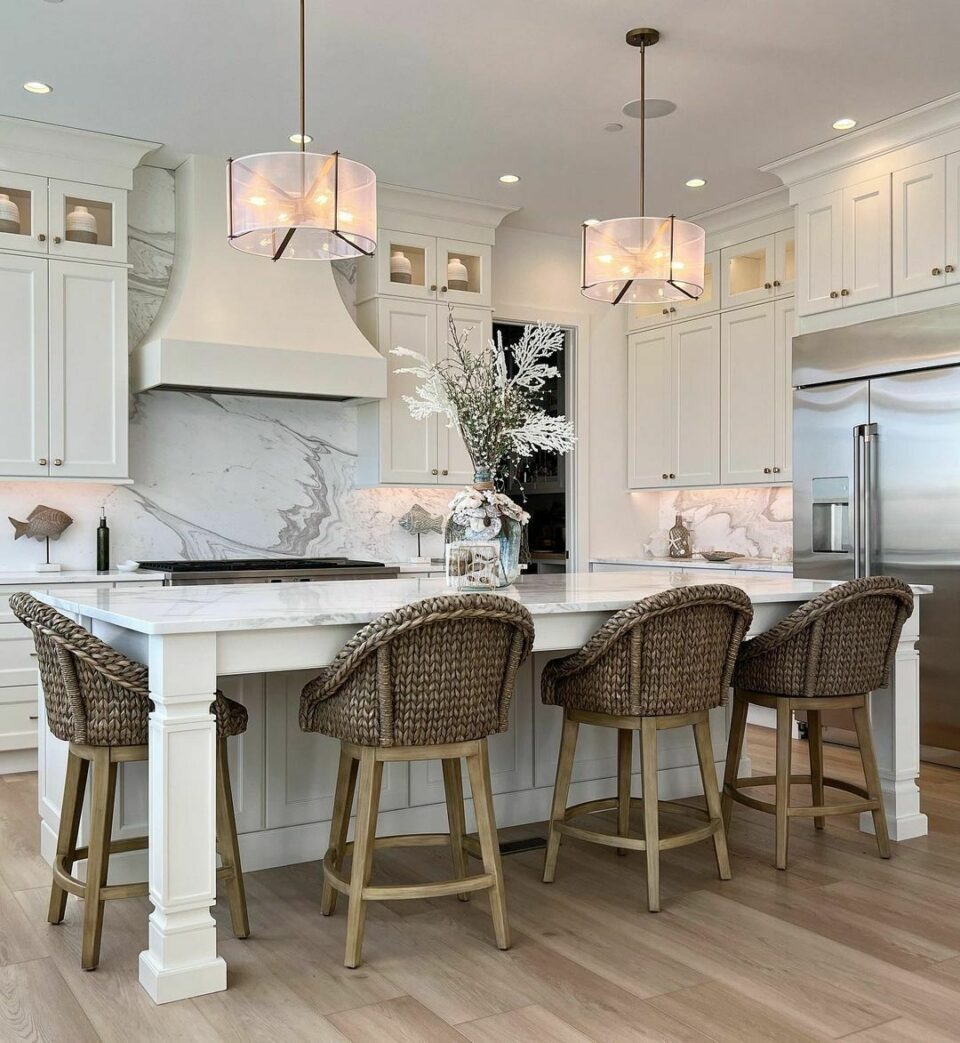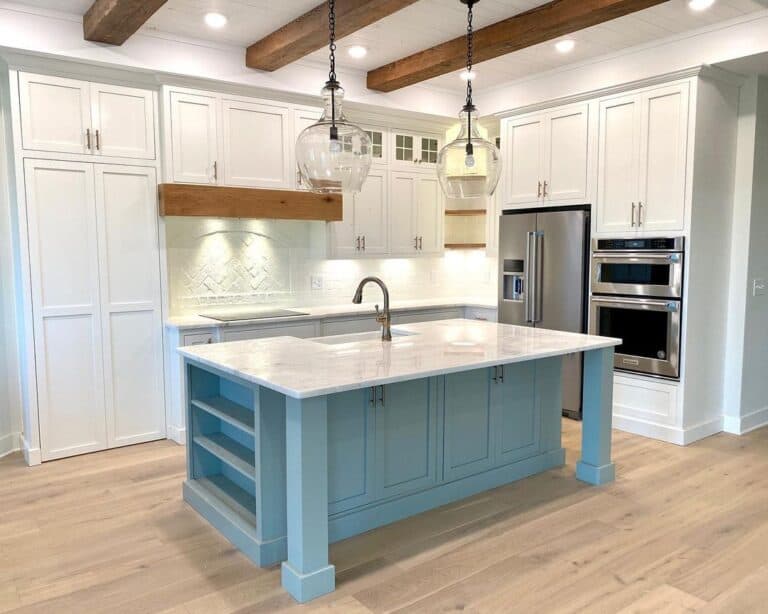Vital Elements to Consider When Picking Legs For Cooking Area Island
Picking the appropriate legs for a kitchen area island involves a mindful analysis of numerous variables that can dramatically influence both capability and aesthetic appeal. As we discover these aspects, it becomes clear that each choice can have significant effects for the general kitchen area experience.
Product Options
When choosing legs for a kitchen area island, comprehending the various material alternatives is important for attaining both aesthetic charm and structural integrity (Legs For Kitchen Island). The option of product considerably affects not just the durability of the island but additionally its overall design and performance
Wood is a prominent selection, supplying warmth and flexibility. Strong hardwoods, such as oak or maple, provide toughness and can be stained or repainted to match the kitchen design. Metal legs, typically made from stainless steel or wrought iron, add a modern-day and industrial feeling while guaranteeing durability and stability. These products are immune to use and can sustain substantial weight, making them excellent for bigger islands.
Another alternative is engineered products, like MDF or plywood, which can be much more affordable while still offering a series of coatings. They might not give the exact same level of stability as strong timber or metal. Legs For Kitchen Island. Last but not least, materials such as acrylic or glass can produce a modern look, though they may need added support to make certain stability.
Inevitably, the option of product for kitchen island legs ought to line up with the wanted functionality and the general motif of the cooking area.
Style and Style

When taking into consideration design, the shape and finish of the legs are vital. Tapered legs can give a sense of lightness and beauty, while thicker, a lot more robust legs can share toughness and security. Additionally, the coating-- be it painted, tarnished, or all-natural-- ought to match the kitchen cabinetry and countertop products to produce a unified look.
Furthermore, the style of the legs can additionally show personal preference. Customized or attractive legs, such as those including elaborate carvings or one-of-a-kind geometric forms, can act as focal factors, adding character and character to the kitchen. Inevitably, the appropriate option will certainly not only enhance functionality yet also boost the aesthetic read this post here appeal, making the kitchen island a standout function of the home.
Height Considerations
Choosing the proper height for kitchen island legs is vital, as it directly influences both performance and convenience. The standard height for a kitchen island usually varies from 36 to 42 inches, straightening with usual countertop elevations.

It is also necessary to make up customers' elevations and choices. Personalizing the elevation can guarantee a comfortable experience for all household participants, making the cooking area island an extra practical and enjoyable room.
Weight Support
Making certain ample weight support for kitchen area island legs is crucial for both safety and performance. The kitchen area island frequently serves several functions, including food prep work, eating, and added storage space, demanding a robust assistance framework. When choosing legs, it is vital to take into consideration the overall weight capability required based on the island's intended use and the products that will be put on it.
The selection of material for the legs plays a substantial duty in their weight-bearing abilities. Solid timber, metal, and heavy-duty compounds normally provide premium toughness contrasted to lighter products. In addition, the design of the legs-- whether they are right, tapered, or have a pedestal type-- can affect their capability to distribute weight efficiently across the framework.
Always get in touch with the producer's requirements pertaining to lots limitations to make certain that the legs can sustain the intended weight without endangering safety and security. In summary, choosing kitchen island legs with adequate weight assistance is important for developing a functional and secure cooking room.
Installment and Maintenance
Appropriate setup and upkeep of kitchen area island legs are essential for ensuring durability and stability. This typically includes protecting the legs to the island base using appropriate bolts, making certain that the legs are degree and lined up.
When set up, routine maintenance is required to preserve the integrity and look of the legs - Legs For Kitchen Island. For wooden official website legs, routine cleansing with a read what he said moist towel and application of appropriate wood gloss can protect against moisture damage and keep their finish. Steel legs may need a mild cleansing option to remove oil and grime, complied with by a dry cloth to avoid corrosion formation
Additionally, check the legs regularly for indications of wear or damages, such as cracks or loosened joints. Tightening up screws or screws as needed can likewise extend the life expectancy of the legs. By sticking to these setup and upkeep practices, property owners can make certain that their kitchen area island continues to be strong and visually appealing for years ahead.
Verdict

Aesthetic comprehensibility is vital in choosing the design and layout of legs for a cooking area island, as these components substantially affect the general setting of the room. Conical legs can give a feeling of agility and elegance, while thicker, much more robust legs can share strength and security.Picking the proper height for cooking area island legs is essential, as it directly affects both performance and convenience. In summary, picking kitchen island legs with adequate weight support is vital for producing a safe and practical cooking space.
In final thought, selecting legs for a kitchen area island demands cautious consideration of various variables, consisting of product alternatives, design, height, weight support, and installment.